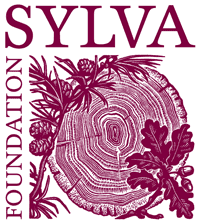
OneOak ceramic jug by Stephen Parry
The latest in our final few items made using OneOak wood, all of them from offcuts, has been completed by potter Stephen Parry.
For as long as potters have made high fired ‘stoneware'( firings of over 1200°C), wood-ash has been used as a glaze, on it’s own or as one of a number of materials combined to make a glaze ‘recipe’. The first ash glazed pottery is thought to have been made in China during the Shang period (1500 BC ) These pots were most likely glazed accidentally, when the wood-ash from stoking the kiln landed on the pots, melting onto the surface of the clay forming a runny glaze. It is rare now for a potter to use wood-ash as a glaze on its own, but it is often used as a major component in a glaze recipe. Wood-ash glazes are know for there fluid surfaces and there subtle green to blue colour. Each species of tree will give a different glaze, even the same tree grown on a different soil type will give a subtly different glaze.
To make a simple ash glaze the wood-ash is first washed to remove the soluble alkalis,(this is a strong and unpredictable flux) and then sieved to remove all the course particles, with would give a rough surface to the glaze. The ash is then dried so that it can be weighed to make a glaze recipe. A simple ash glaze recipe could be: 40% wood-ash, 40% potash feldspar and 20% clay.
Less than a week ago Stephen told us that:
“I spent yesterday firing my wood-fired kiln with the pot, glazed in ‘one oak’ ash. It should be cool enough to open tomorrow (Friday 26th). It is a risky unpredictable process! – puts a whole new meaning to ‘keeping your fingers crossed’. So I won’t know if it is worth sending until tomorrow.”
He continued “After some consideration I decided to go for the interest value rather that the more predictable – So I have glazed my pot (Jug) with 100% ‘OneOak’ ash, rather than making a more conventional glaze out of the ash. I hope it works.”
The resulting jug did indeed ‘work’ and is stunning, having arrived at Sylva in readiness for our next exhibition. Stephen explained that it is a stoneware Jug 50cm high, wood-fired to 1300ºc with 100% ‘OneOak’ ash glaze. He added:
“Well, it came out better than I could have dreamt – that old oak tree must have got something special. Everything that you see on the jug is from the ‘OneOak’ only.”
The OneOak jug will be on display with all other OneOak pieces at Royal Botanic Garden Edinburgh from October 12th – December 2nd.
More about Stephen Parry
Stephen has been living and working in North Norfolk since 1981, where he set up Ryburgh Pottery. Most of his work is thrown using high temperature stoneware and porcelain clays, fired in a variety of wood fired kilns, sometimes firing to well over 1300ºC for up to four days.
He makes a small amount of pots for use in the kitchen, although most of his work is more individual, made in small batches, using soft clay and thick Slips.
Some pots are left unglazed, allowing the wood ash that enters the kiln during the long firings to glaze and colour the work, he also uses wood-ash glazes including Oak, Apple and Pine ash.
As well as the UK he has also exhibited work in France, Germany Denmark and Japan. He is a Fellow member of the Craft Potters Association.
Stephen Parry: wood-fired ceramics
















